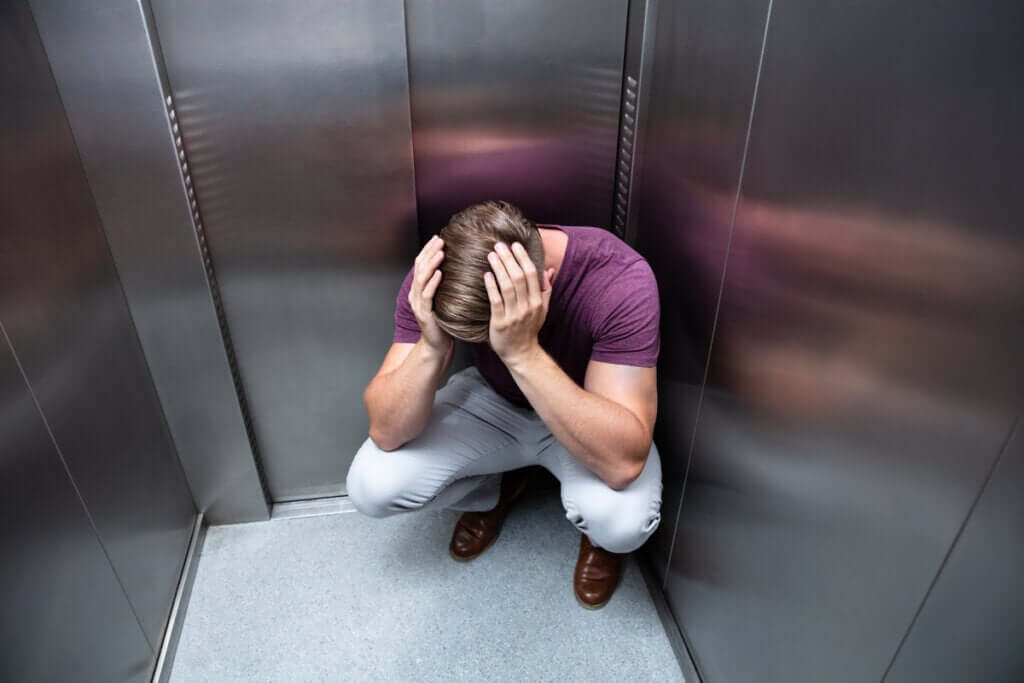Fear is a natural response that helps us save ourselves from certain dangers. Therefore, it is common to be afraid of new situations and that we do not control. However, we may also be afraid of elements of our daily lives; Fear that may have been acquired by addictive learning or as a result of a traumatic experience. In some cases, fear becomes irrational, becoming a phobia. An example of this is the phobia of elevators.
Elevators are a source of anxiety for many people, they are small enclosed spaces, isolated from the outside, that can bring out the most claustrophobic side of all, however, there are people who have a lot of terror to the elevators, this affects their daily life a lot, because for these people it is impossible to enter or even think of one of them.
- Common symptoms of any phobia are sweating.
- Tremors.
- Headaches.
- Nausea.
- Dizziness.
- Tachycardia.
- Hyperventilation and even vomiting.
- For a phobia to be diagnosed.
- These symptoms.
- In addition to exaggerated fear.
- Need to be felt for at least six months.
One peculiarity of the phobia of elevators is that, although it is treated as a widespread phobia, it consists of two types: claustrophobia and acrophobia, the first is irrational fear of confined spaces and limited dimensions; on the other hand, acrophobia is extreme fear of heights.
Thus, elevators have all the characteristics to respond to these phobias, although some people are more afraid of some of the aspects, which causes those who suffer from elevator phobia to experience all the symptoms of anxiety when getting on one of them or when they think I need to get to the top floor of a building.
This phobia usually develops from traumatic elevator-related experiences, so a person would be more likely to develop a phobia of elevators if they were stuck in one of them for a long time. close or known person.
As with other phobias, fear can be inherited, i. e. a person may suffer a phobia of elevators because someone very close to them has had this fear since childhood and has constantly warned him of dangers, or fear can appear clearly. Reason.
Another possibility is that the person had a previous elevator-independent anxiety disorder and entered one at a critical time. Anxiety works by association. Therefore, experiencing intense anxiety symptoms in an elevator can scare a person into an elevator and feel the same again.
If the fear is not yet very intense it may be enough to do some breathing and relaxation exercises before entering the elevator, it is important to try not to avoid escaping the situation, not to mention sudden or compulsive behaviors that can make the experience even more traumatic.
It can be very useful to be accompanied by a trusted person for safety. In addition, this person can intervene if you’re not feeling well or if you need help. Similarly, being and having a conversation in the meantime can be a very simple task. distraction that will help you not focus on fear.
However, if these guidelines aren’t enough, it’s best to see a professional to start proper psychological treatment. These treatments are quite simple and consist mainly of three strategies: cognitive restructuring, relaxation and systematic desensitization.
The former will attempt to change these negative beliefs or thoughts that interfere with the normal relationship between the person and the elevators, for example, get real information about the number of serious elevator accidents or the risk of blockage.
Relaxation exercises will focus on reducing symptoms of anxiety before and during elevator exposure; in turn, systematic desensitization involves gradually exposing the person to the object that frightens them.

